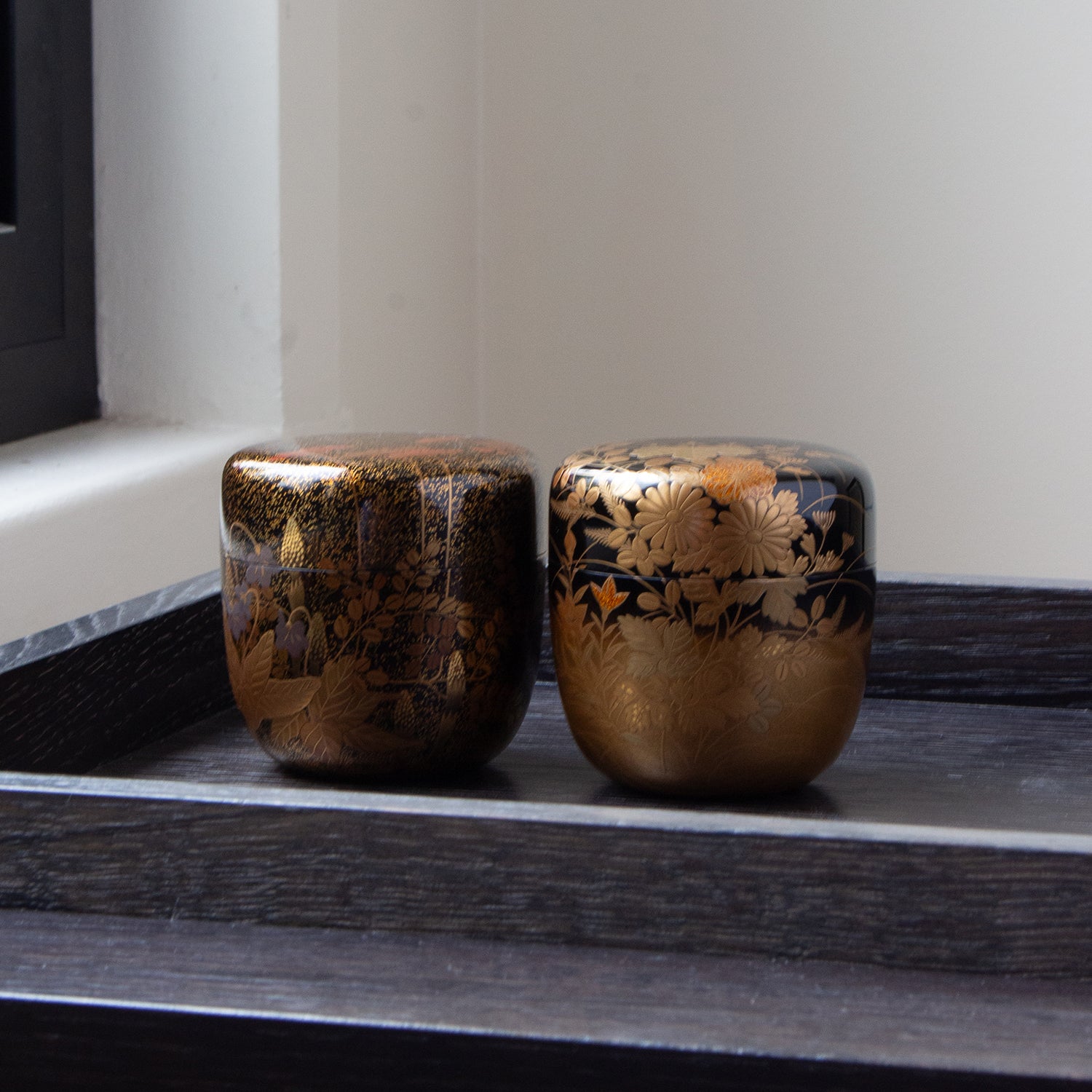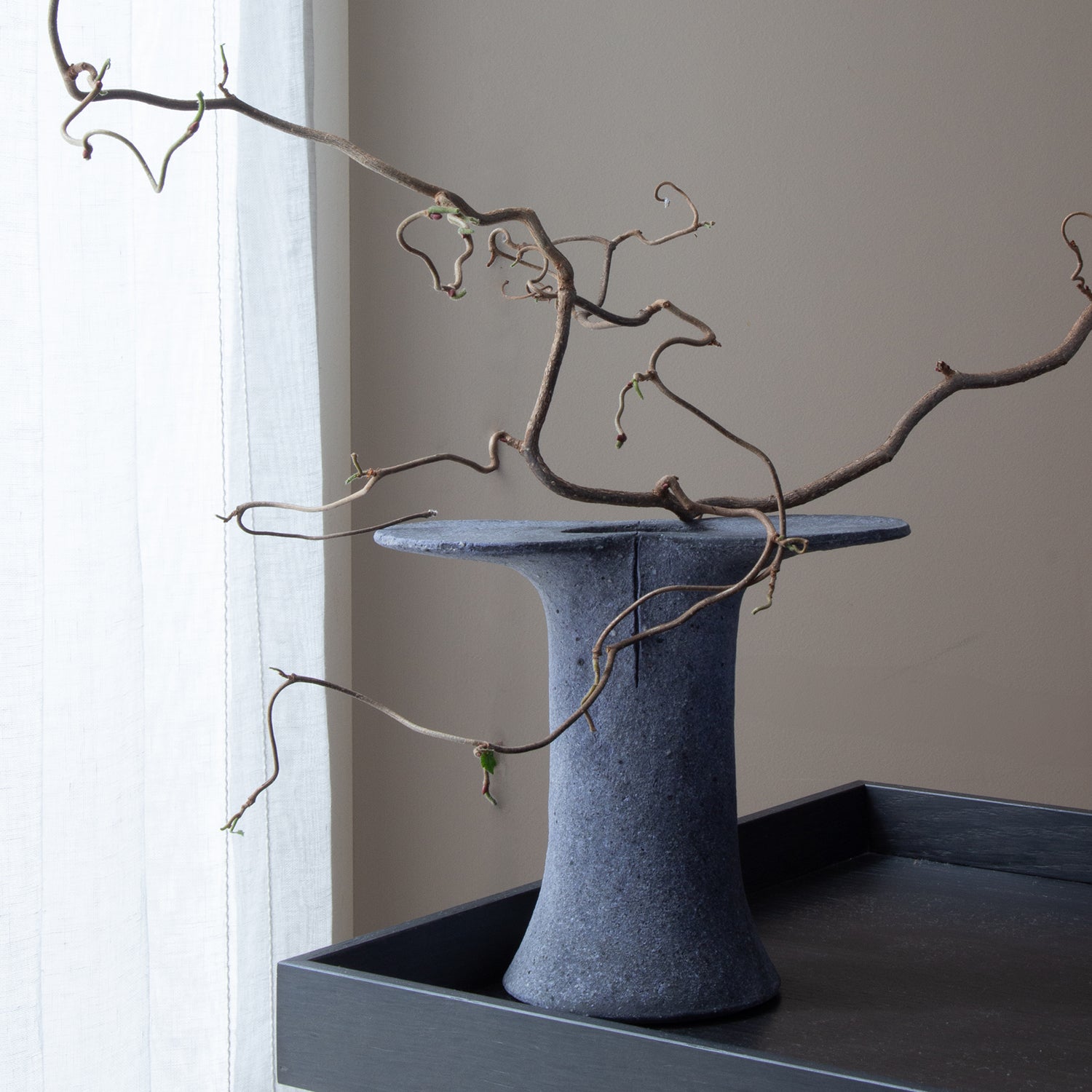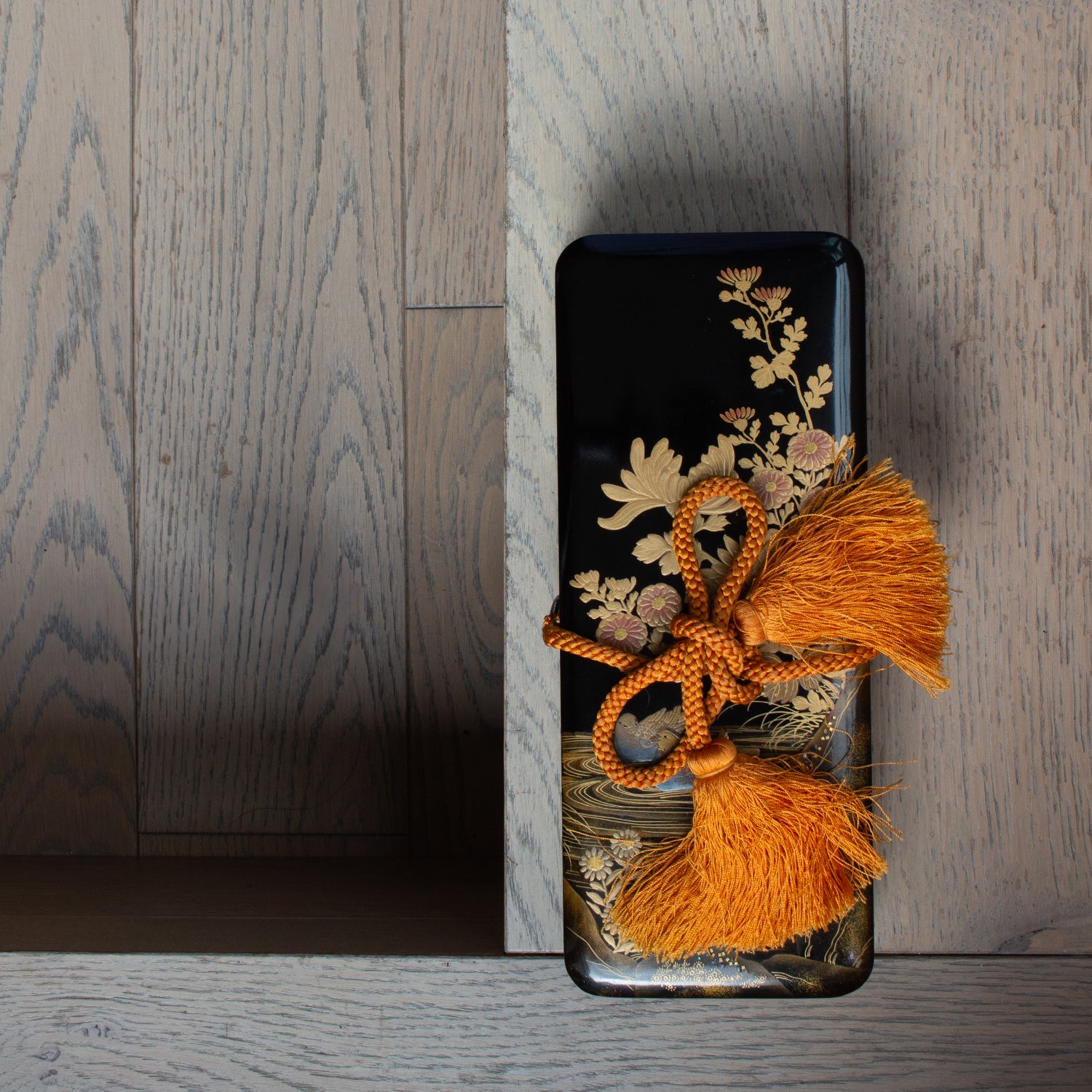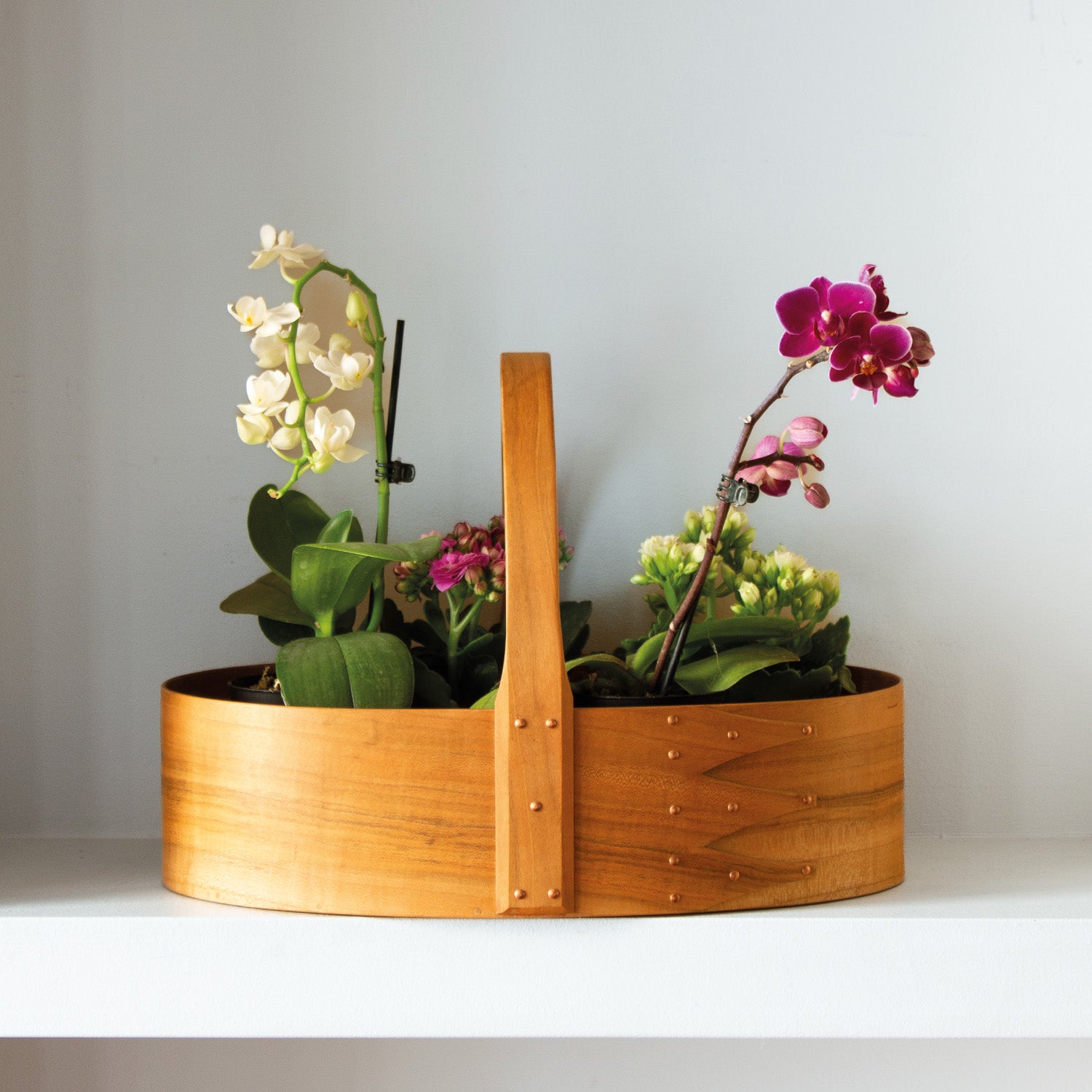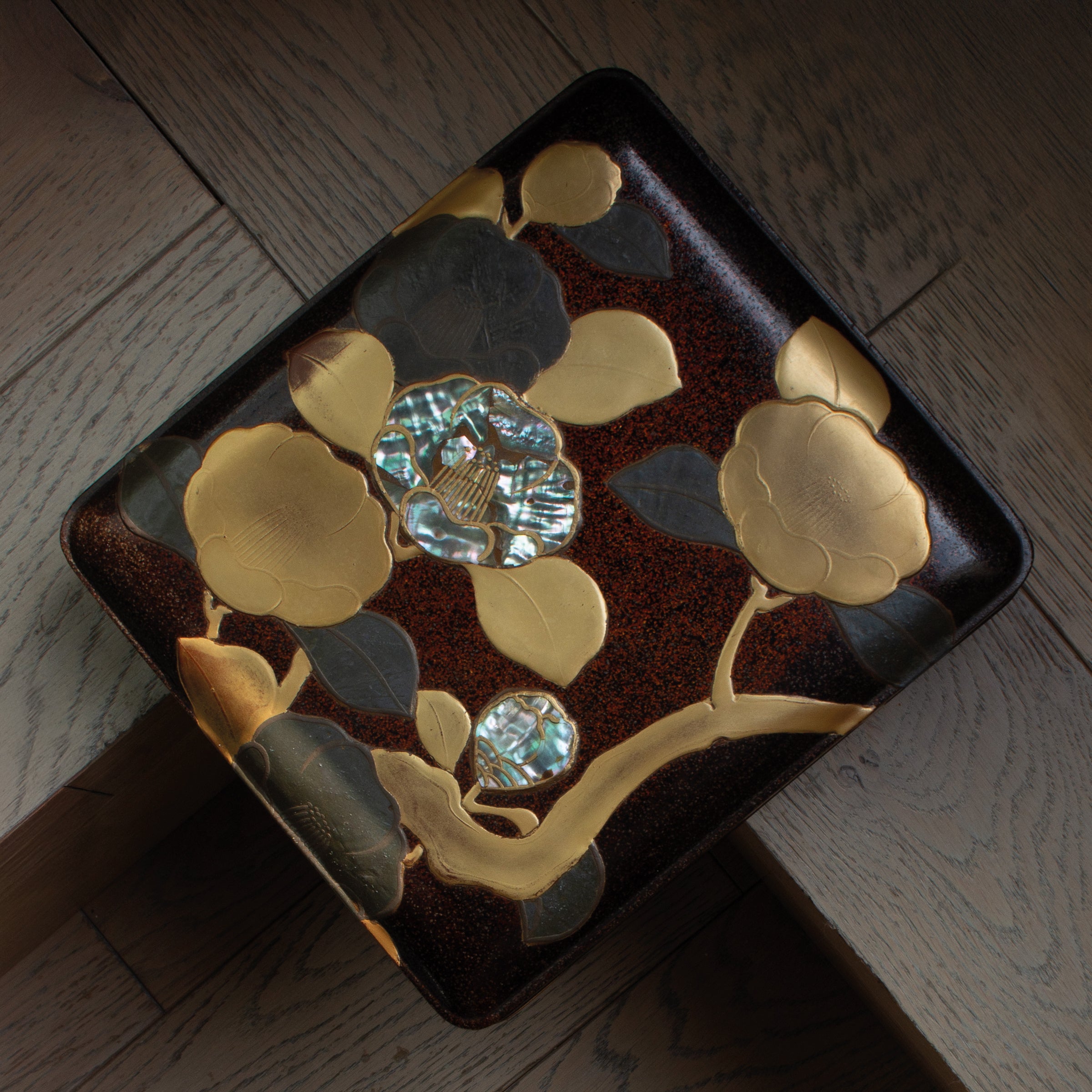

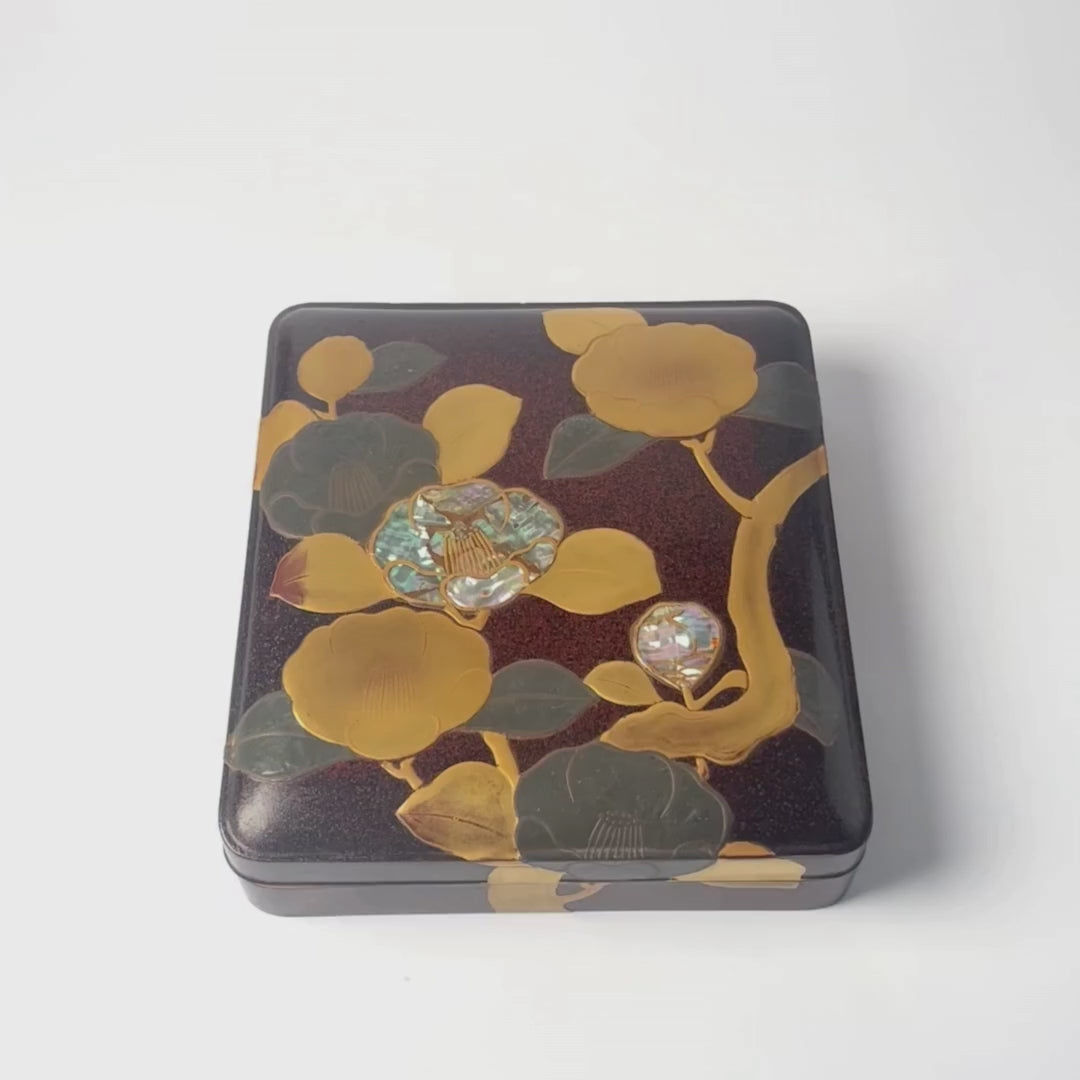

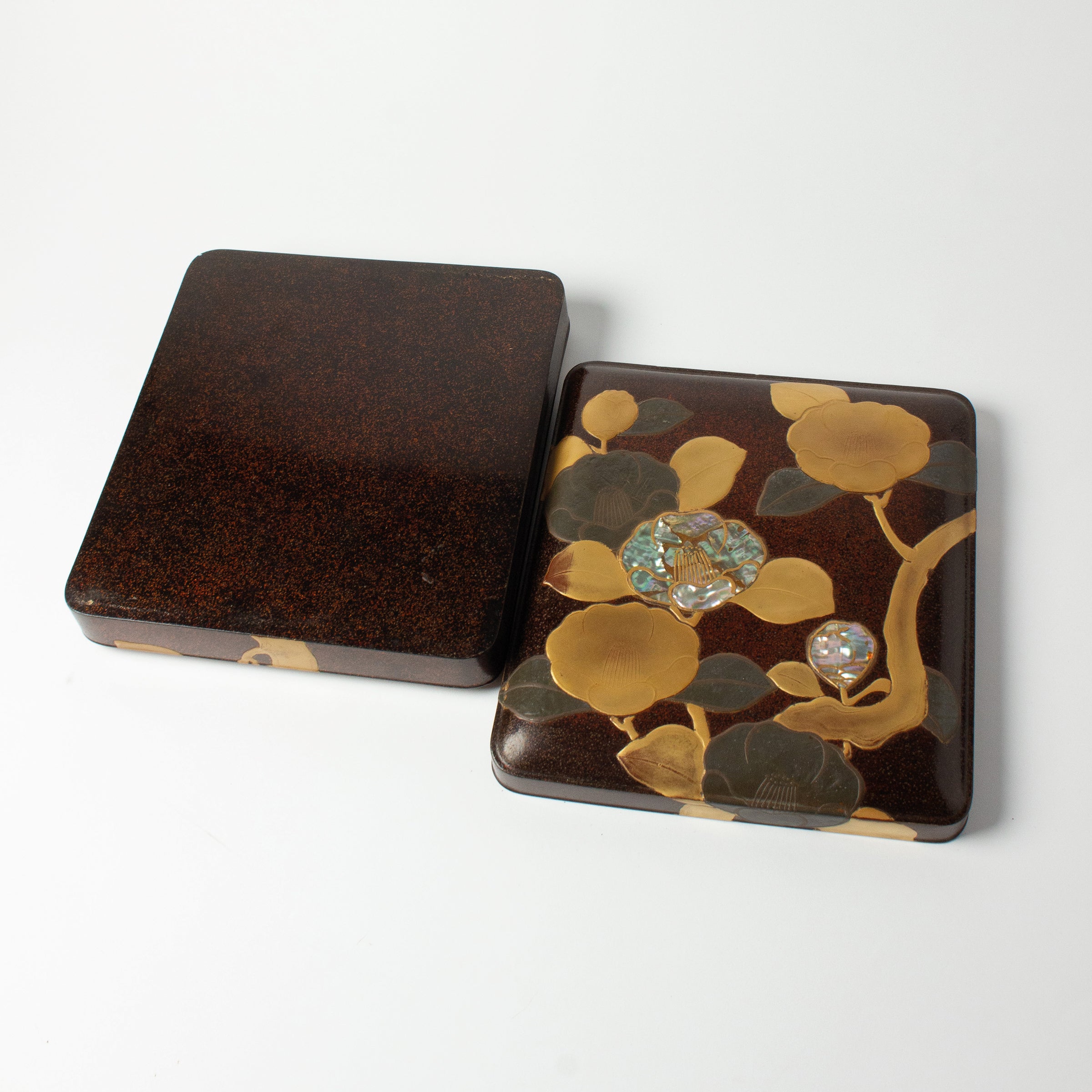

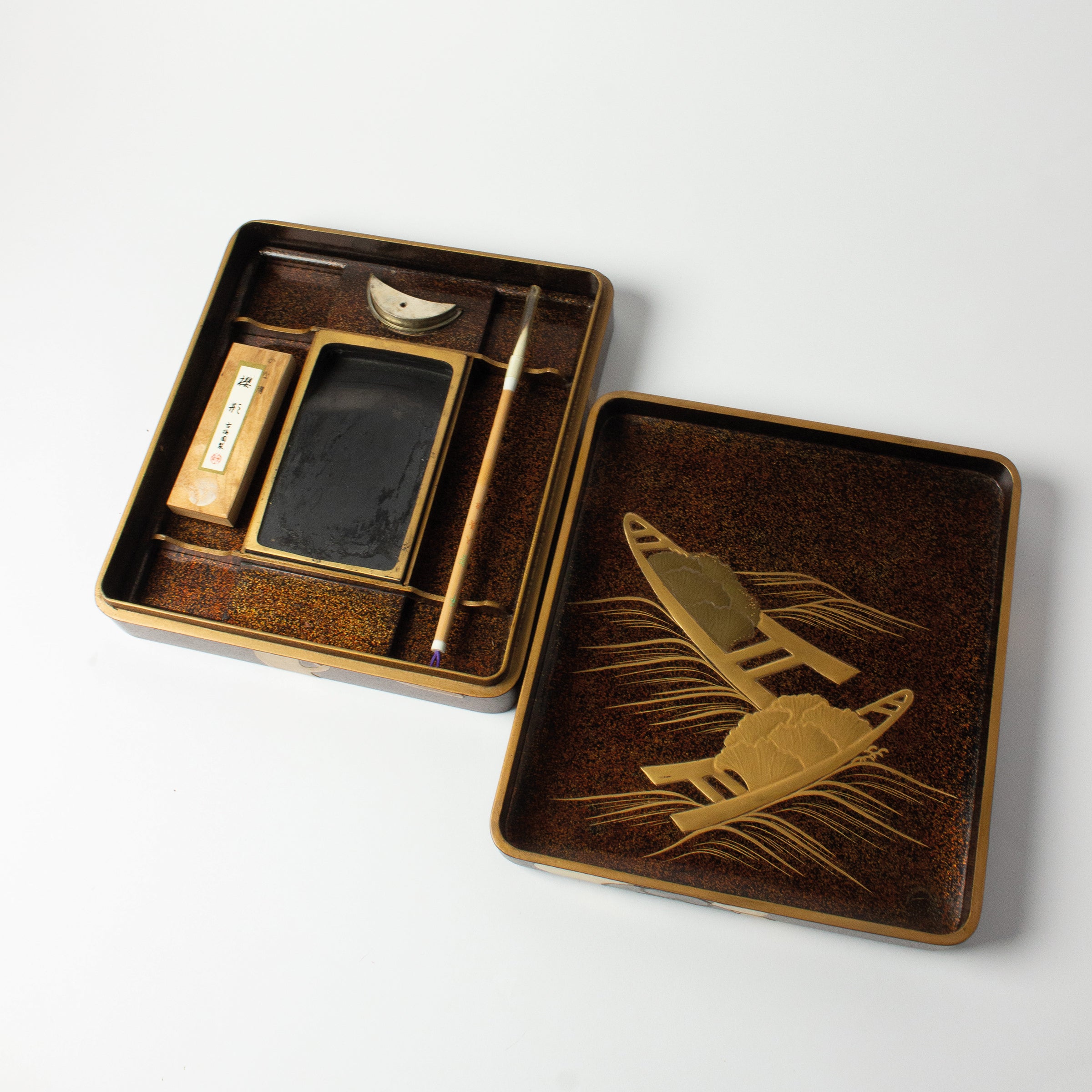




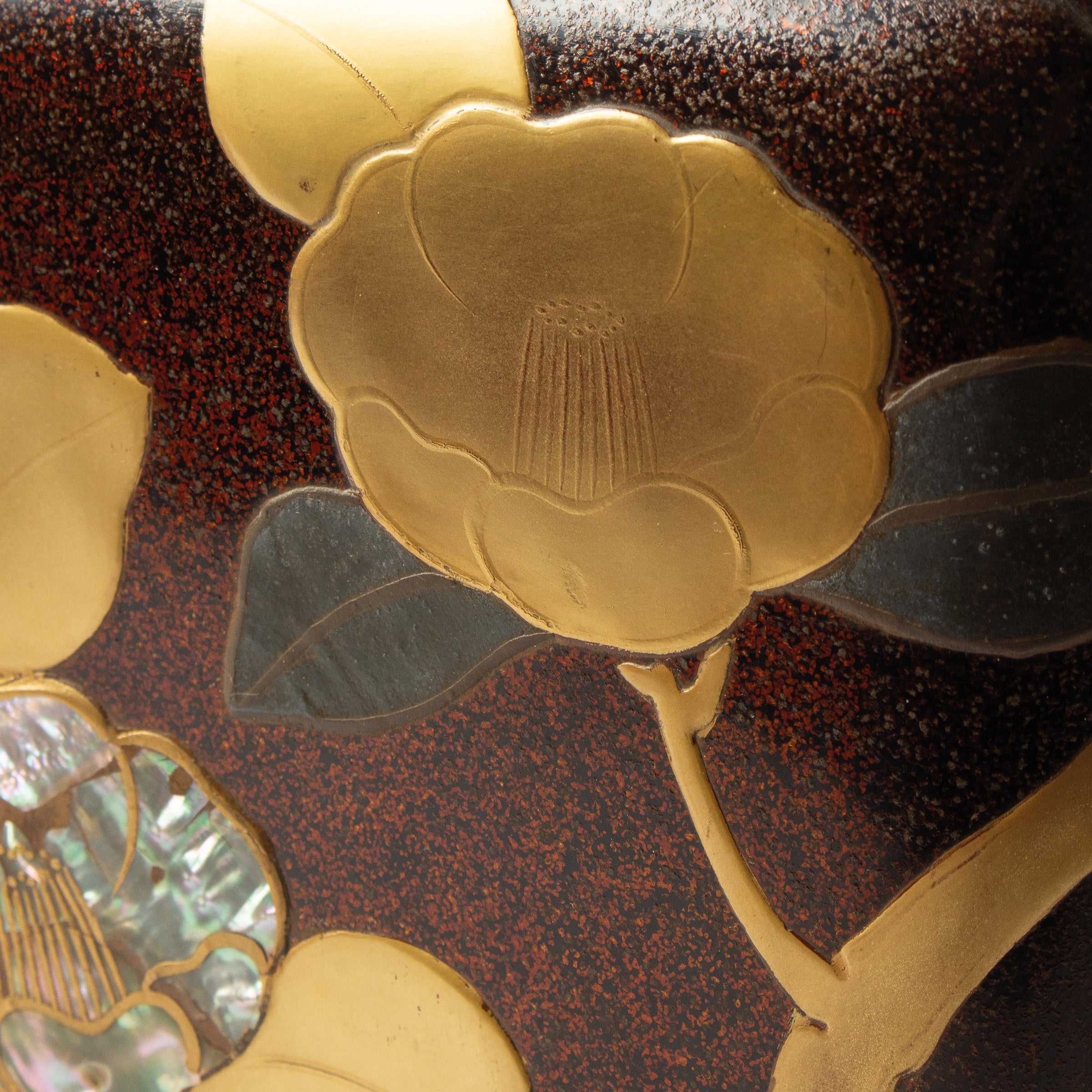





Suzuribako Rimpa school, urushi lacquer, camellias in maki-e gold powder and mother-of-pearl
This suzuribako, a traditional Japanese writing box, is a superb example of the refinement of the Rimpa school , a major artistic movement in Japan. It is more specifically part of the so-called "Kōrin" style, named after Ogata Kōrin, who codified its principles in the 18th century, with its bold compositions, flat gold tones and stylized naturalistic motifs. Its lush decoration features a composition of camellias (tsubaki, which symbolizes elegance, devotion and love ) stylized, made in maki-e - a technique that consists of sprinkling fine particles of gold on the still wet lacquer. This golden opulence is enhanced by inlays of blue mother-of-pearl (raden) and metal, giving the whole a subtle shine and a depth characteristic of this style.
The interior of the box is carefully arranged to accommodate the essential instruments of traditional writing. It contains a heavy ink stone (suzuri) and a period silver water container (suiteki) , illustrating the attention paid to functional and aesthetic details. A more contemporary brush (fude) and ink stick (sumi) are also present. Inside the lid is a beautiful decoration of flower rafts ( hana-ikada) was made in maki-e. The whole, inside and out, is covered with a nashiji ground, a textured effect obtained by dispersing fine particles of gold in the lacquer, creating a subtle shimmer reminiscent of the skin of a pear.
The Rimpa school, founded in Kyoto in the early 17th century by Hon'ami Kōetsu and Tawaraya Sōtatsu, embodies a refined decorative art, inspired by nature, classical literature and Japanese aristocratic culture. The lacquer works of this school are distinguished by the use of gold-powdered maki-e, nashiji, mother-of-pearl (raden) and silver leaf, integrated into dynamic compositions with simplified forms, marked visual rhythms and assumed contrasts between solids and voids. The Kōrin style, which constitutes one of its most emblematic expressions, is characterized by the audacity of its forms, the advanced stylization of its motifs and a great decorative freedom. Codified by Ogata Kōrin in the 18th century, the Rimpa style profoundly influenced Japanese aesthetics, and even had an echo in Western Art Nouveau, sensitive to the decorative stylization of nature.
This antique piece (late Taisho period, which lasted from 1912 to 1926) is carefully preserved, showing wear consistent with its age and use, with some scratches and chips. It is presented in its original wooden box (tomobako). In accordance with common practice in the Rimpa school, this object does not bear a signature, the collective approach and the importance given to common aesthetics having often prevailed over individual identification.
According to the inscription on the back of the protective box, this suzuribako was commissioned by Handa Zenshirō, an industrialist and patron of the arts, linked to Doshisha University and Karuizawa Church, to which he made significant donations (particularly in connection with the funding of the monument dedicated to Niijima Jō, also known as Joseph Hardy Neesima (1843-1890), Japanese missionary and educator, founder of Dōshisha University) .
|
|
JAPAN |
|
|
(box only) Length 24cm x Width 21.6cm x Height 6cm |
| WEIGHT | (total) 1570gr |
| COMPOSITION |
|
KNOW-HOW
Traditional Japanese lacquer, urushi, comes from the sap of the lacquer tree (Rhus Verniciflua), which flows after incision of the bark. It is a very precious material, a tree will give a maximum of 200ml of sap in its life, which is worked by specialized craftsmen. It takes many operations, slow and meticulous, and several months of work to bring real lacquer objects to life. It is the oldest craft in Japan! Initially used to protect and waterproof objects, this immutable craft has become an art of extreme sophistication. If you want to know more about the art of Japanese lacquer, you can read our dedicated article > .
DELIVERY
Delivery
Free delivery in metropolitan France for purchases over €150. Orders are generally sent within 2 working days, except in special cases announced in the banner at the top of the site.
Precious items are wrapped in beautiful cloth, beautifully tied in the precious art of Korean pojagi. Some exceptions apply, especially if the items are bulky. Learn more >
Detailed information on deliveries is available via this link >
Your invoice will be sent by email
Payment methods
By card (Stripe operator): Visa, MasterCard, Discover, American Express.
Secure card payment with 3D Secure.
By PayPal, Apple Pay, Google Pay and Shop Pay
Returns and exchanges
14 days to change your mind.
CARE INSTRUCTIONS
Clean with a very soft cloth to avoid scratches, soaked in a little warm water if necessary (never soak your lacquer objects). No microwave, dishwasher, dryer. Do not expose to direct sunlight for a long time (risk of discoloration). If the atmosphere is very dry and very hot, and to avoid the risk of cracking, you can place a glass filled with water next to your lacquer object.
Choose options

The art of wrapping
The exceptional items are wrapped in a beautiful fabric beautifully knotted using the little-known art of Korean pojagi and decorated with a delightful maedup (Korean ornamental knot). Details and conditions >


